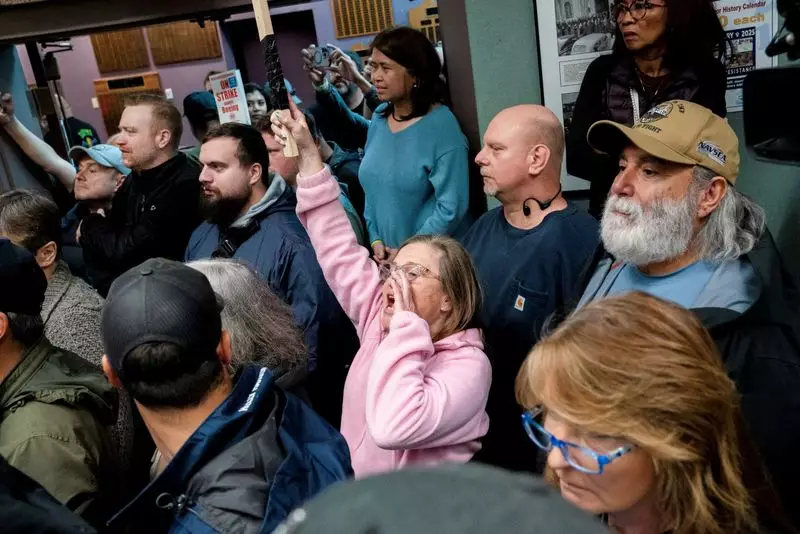In recent weeks, Boeing has found itself entangled in a labor strike led by the International Association of Machinists and Aerospace Workers (IAMAW). Approximately 33,000 machinists on the West Coast, primarily in Washington state, initiated this work stoppage on September 13, reflecting deep-seated issues related to compensation and job security. The strikers’ demands have become a focal point in the ongoing discourse surrounding labor rights in America, encapsulating the frustrations of workers who feel undervalued and overworked.
At the center of this conflict is a new contract proposal, which, if accepted, promises a 35% increase in wages over a span of four years. This offer, along with a $7,000 ratification bonus and other enhancements to retirement plans including a one-time $5,000 contribution, has been hailed by Boeing and the union as a significant step forward—one that could potentially bring an end to this lengthy strike. However, this deal is met with skepticism. The potential acceptance of this proposal hinges upon the workers’ sentiments, especially after a previous contract offering was overwhelmingly rejected.
Boeing’s labor negotiations have been tumultuous. The latest contract proposal followed the withdrawal of a previous offer that included a 30% wage increase. The union’s stance has been clear, advocating for a more substantial 40% wage increase and the restoration of a defined benefit pension plan—concerns that resonate deeply in an era where inflation is top of mind for many American workers. This historical discontent has fueled the current strike, signifying a broader issue where labor feels compelled to reaffirm their rights amidst corporate challenges.
Despite Boeing’s public optimism regarding the new proposal, worker sentiment remains hesitant. Many machinists, feeling that their contributions to the company aren’t adequately recognized, may view this latest contract as insufficient—as indicated in past rejections. The union’s strong statements urging workers to consider the new proposal reflect an awareness of the complex dynamics at play. Striking laborers are compelled not only by immediate economic circumstances but also by the long-term implications of their choices.
Compounding Boeing’s labor woes are external pressures from the federal government. The involvement of Acting U.S. Secretary of Labor Julie Su in negotiations illustrates the gravity of the situation. Su’s intervention appears aimed at fostering a resolution that aligns with broader economic concerns, especially in light of looming political repercussions. The strike’s potential impact on economic indicators, especially ahead of the November 5 Presidential election, has caught the attention of economists and policymakers alike.
The ripple effects of this strike are already observable, with estimates suggesting that it could lead to a reduction of up to 50,000 jobs from the nonfarm payrolls in October. This figure reflects a combination of direct layoffs among striking and non-striking staff, as well as repercussions throughout Boeing’s supply chain. With labor actions exerting a discernible influence on economic performance, the stakes extend beyond Boeing to encompass national employment statistics and broader economic health.
Boeing’s operational difficulties have not been solely confined to labor negotiations. Recent years have seen the company grappling with a series of controversies, including safety breaches that have garnered federal scrutiny. The company’s past transgressions, including a guilty plea to charges of fraud, contribute to a landscape where public trust and employee morale are increasingly fragile. Each episode has compounded existing tensions, creating a work environment marked by uncertainty.
Moreover, Boeing’s workforce reduction strategy, which involves cutting 17,000 jobs or about 10% of its global staff, poses significant questions about the company’s future direction. These cuts, combined with financial losses estimated in the billions, paint a troubling picture for the aerospace giant as it navigates the treacherous waters of labor relations and public perception.
The current strike at Boeing represents not just a battle for better wages and working conditions, but also highlights the evolving narrative surrounding labor rights in the United States. As the machinists prepare to vote on the new proposal, the outcome will likely resonate beyond the walls of Boeing, serving as a bellwether for workers across the country who face similar challenges. History tells us that the resolution may not be straightforward, but it is clear that this moment will be pivotal in shaping the landscape of labor relations for years to come.

